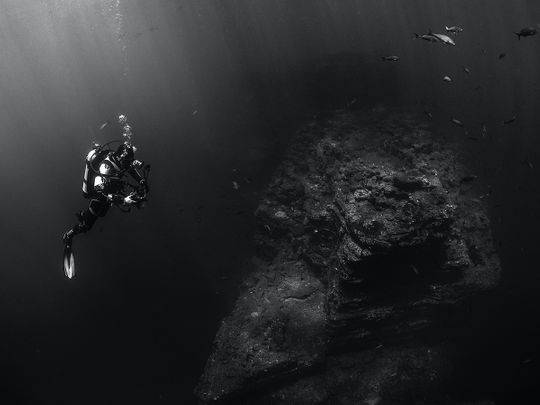
Monuments and cities that were once teeming with life, today remain deep below the ocean’s surface.
Click start to play today’s Spell It, where we find the ‘sunken’ remnants of civilisations.
Here are a few that offer a rare glimpse of times past:
1. Cleopatra’s Palace, Egypt
In 1998, a team of marine archaeologists found ruins from ancient Alexandria, near its modern-day counterpart in Egypt. Among the ruins was Cleopatra’s palace, and it is likely that the complex was taken over by the sea due to a series of earthquakes. Considered to be one of the richest archaeological sites in the world, the location and treasures found in the palace, and in surrounding areas, matched 2,000-year-old descriptions made by Greek historians. Much of the palace – its general structure, statues, several temples and columns – is still standing today. According to US-based diving magazine Underwater360, there are plans to build an immersed fibre-glass tunnel right up to the submerged palace, as part of tourism initiatives in Egypt.
2. Shore Temples of Mahabalipuram, India
According to ancient legend, the seven temples of Mahabalipuram (in modern-day Tamil Nadu, India) were so dazzling that the deity of rain and storm, Indra, became jealous. He then submerged all but one temple out of spite, leaving it without any companions. After the tsunami of 2004, some visitors to the area reported spotting a row of granite boulders pushing out through the waves. Over a decade later, archaeologists found that the boulders were actually the remains of an ancient port, from one of the six temples that went underwater. Historians dated the structures, which are still intact, to be around 1,100 to 1,500 years old. The rising of sea levels over a period of 2,000 years is thought to have engulfed several hundred metres of Indian coastline, including the ancient shore temples.
3. Yonaguni-Jima Ruins and Pyramid, Japan
When the world’s largest recorded tsunami struck Yonaguni-Jima in April 1771, with waves over 40m high, it brought an end to the ancient Mu civilisation. But did this civilisation truly exist, and do the eroded ruins in the area belong to it? Or are they just natural stone formations? Today, the region is at the centre of speculation among academics. Some historians argue that people inhabited the 5,000-year-old structure, and even lived in its largest part – a complex, stepped pyramid that lies at a depth of 25m, off the coast of Yonaguni Island. Others claim that the basic geology of the region caused the sandstone structures to evolve naturally. Regardless of the answer, the sight is still a tourist magnet for divers and snorkellers, who visit from all over the world.
What do you think of these sunken monuments? Play today’s Spell It and tell us at games@gulfnews.com.








